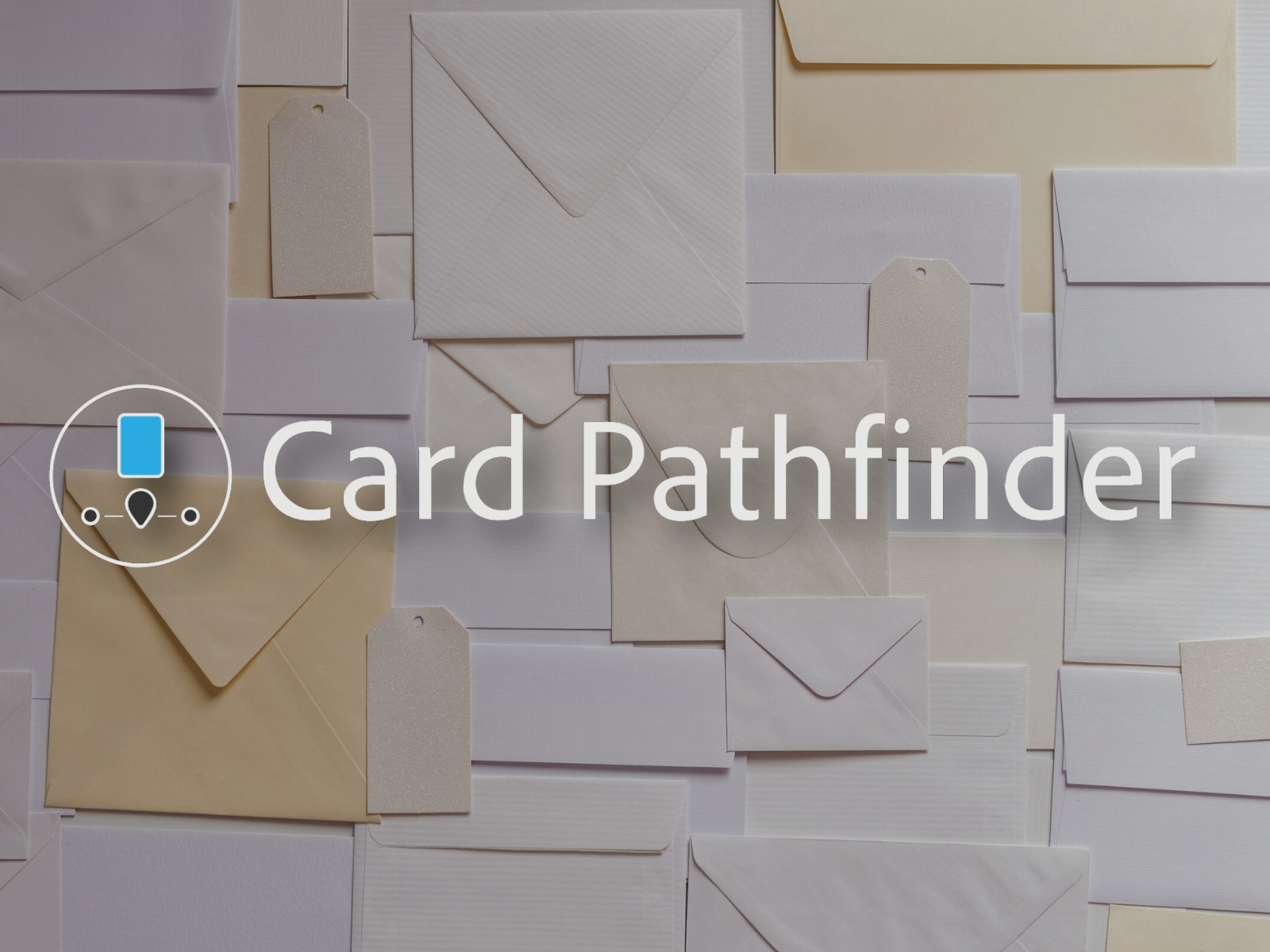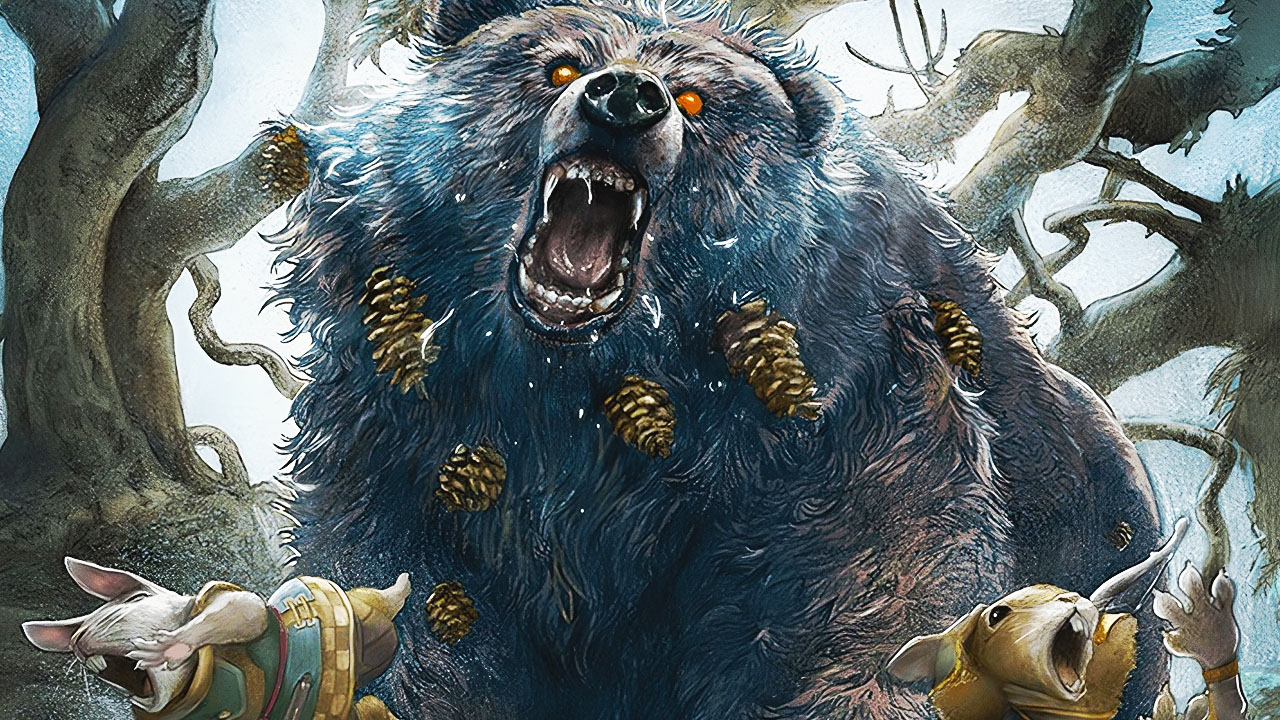Welcome back to BTB’s Legacy Roundup… wait a second. This isn’t Legacy.
Today I am bringing something out of the ordinary, at least for me. Usually, I am running down the Legacy metagame but today will be playing the role of historian.
Several months back, when Modern was going through its Bomat Burn phase, named for Bomat Courier, I approached BTB about writing an article for the deck. Normally, I’m a Legacy player, but I was intrigued by the approach of the deck. While it was considered “Burn”, it wasn’t your mother’s Burn deck; or even Paul Sligh’s Burn deck.
Over several weeks, I tested a version of Bomat that evolved from Modern Bomat, to cutting Bomat, then deconstructing it and rebuilding it into a Pauper Kuldotha Burn deck, back to a Modern 8-Whack deck and then to its present form: Gruul Dino-Whack.
What had started as a “Legacy guy goes and plays Modern” column turned into “woah, there is a lot of versatility in Burn these days.”
How did that happen?
Paul Sligh and Memory Lane

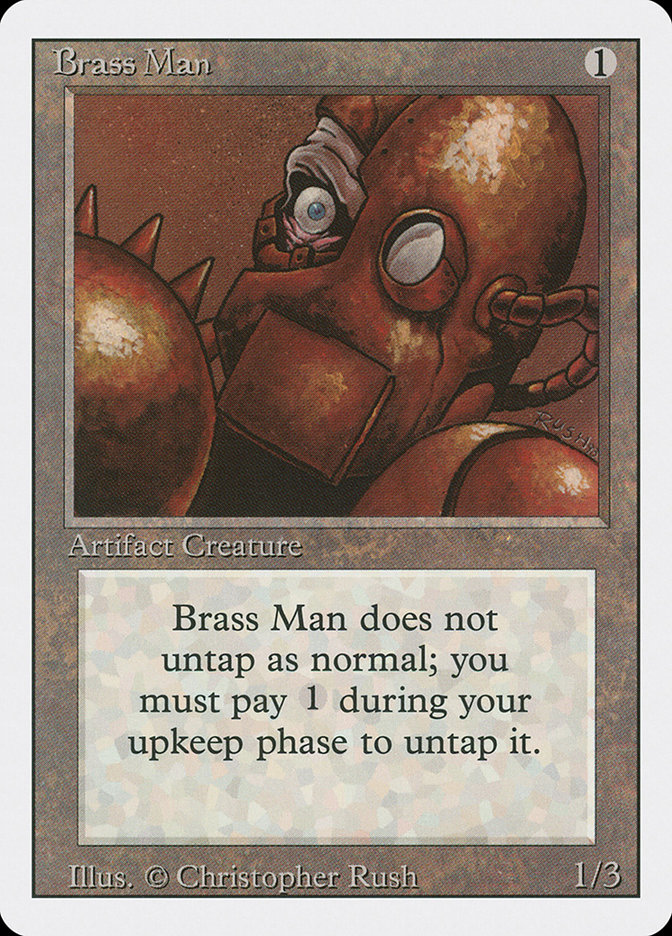
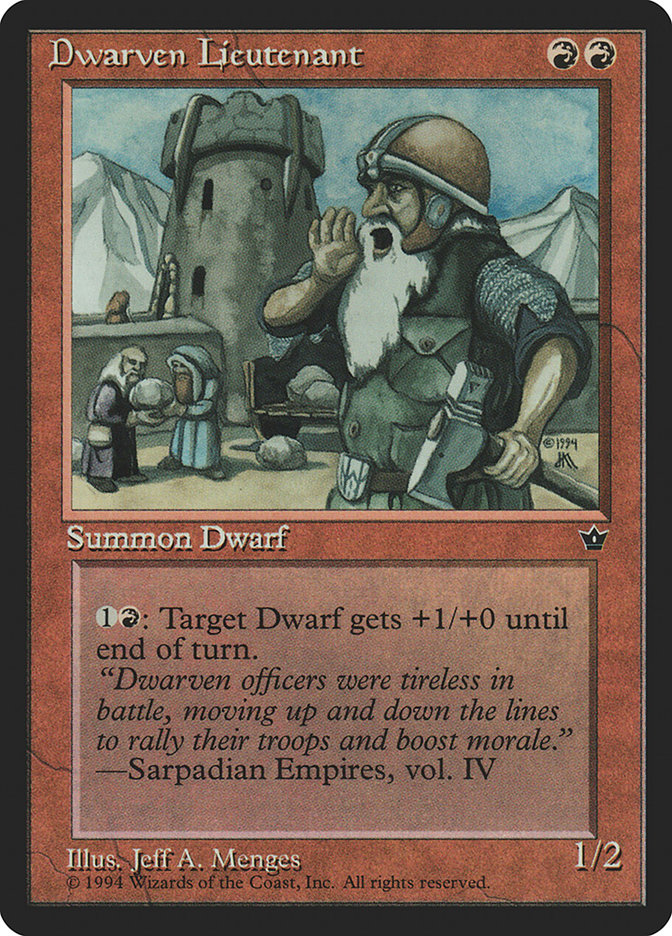
April 21st, 1996 was a significant day in Magic the Gathering history. On this day, at a PTQ event in Atlanta, Georgia, Paul Sligh brought a deck that today amounts to $120 and marched all the way to the finals taking runner-up, with what history considers the first competitive Red Deck Wins. Dubbed “Sligh” the archetype broke through the field which included a multitude of control decks rising to the top and making history in what may be considered by today’s standards to be one of the most defining deck designs in the history of the game.
Using a then-unknown theory utilizing the mana curve, the deck was designed to win the game by turn 4. We have all played a red deck and know how it goes. Play a cheap, fast creature on turn 1, play another on turn 2 and back them up with damaging instants and sorceries. Paired with a clean, infallible mana-base, and you’re nearly guaranteed a mulligan-free hand every time. In fact, the cards are so cheap, they are often common or uncommon and don’t amount to much monetary value.
Some have called this deck “Sock Full of Pennies,” a euphemism of course for getting beat down hard with basically nothing.
At the time, this was new tech and took the game by storm.
What followed were years of competitive ups and downs for Red Deck Wins. In ’97, Riad Mourssali Celerity won PTQ San Diego with a Mirage-Block version packing four copies each of Incinerate, Fireblast, and Hammer of Bogardan. By this time, Red Deck Wins was also utilizing creatures higher on the mana curve such as Viashino Sandstalker and Talruum Minotaur, both big and hasty creatures that backed up the earlier turn plays.
Mid-Range Flame-Out
Of course, we have all been in the hot seat when the deck runs out of gas. If you don’t have enough in the opening hand to get yourself close to the finish line, you must put faith in top-decking the winning pieces or hope you won’t flood and run out of resources to seal the deal. Until recent years, there simply weren’t that many great card-draw engines for red mages.
During Pro Tour Hour of Devastation in 2017, the deck had evolved to a point where more artifact cards were being splashed to aid in replenishing your hand. Bomat Courier was released in Kaladesh and was Standard legal at the time.
Bomat Courier is a hasty artifact creature that allows you to exile a card face down when it attacks and later sacrifice it to put all those exiled cards in your hand. If you are fortunate enough to get Bomat in early, it’s possible to gain an extra card or three, always critical for Red Deck Wins.
It’s noteworthy that at Pro Tour Hour of Devastation, six of the top eight decks were either straight red or variants of red.
Red Deck Wins sure had made a name for itself!
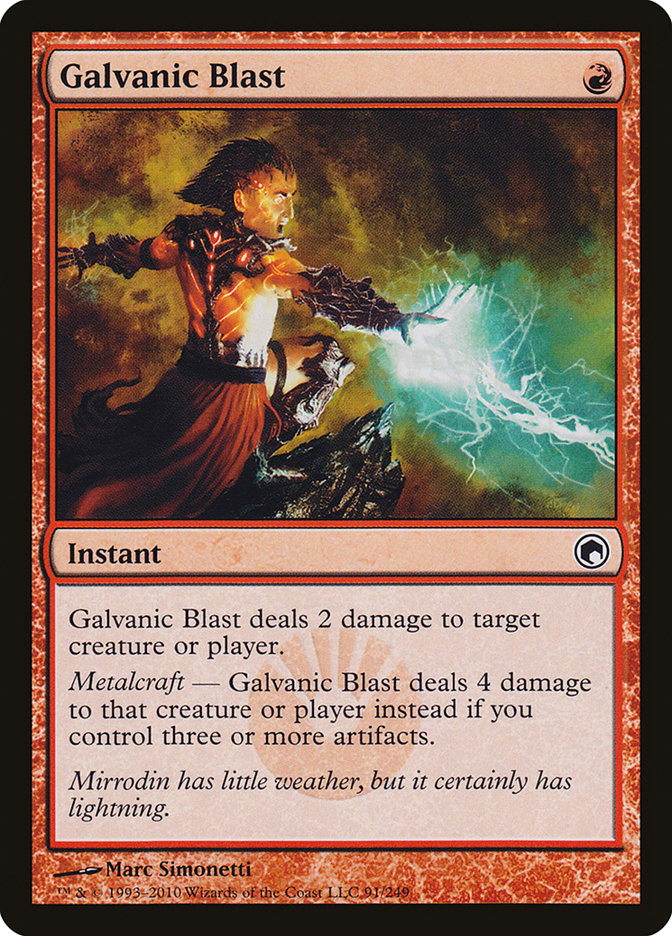

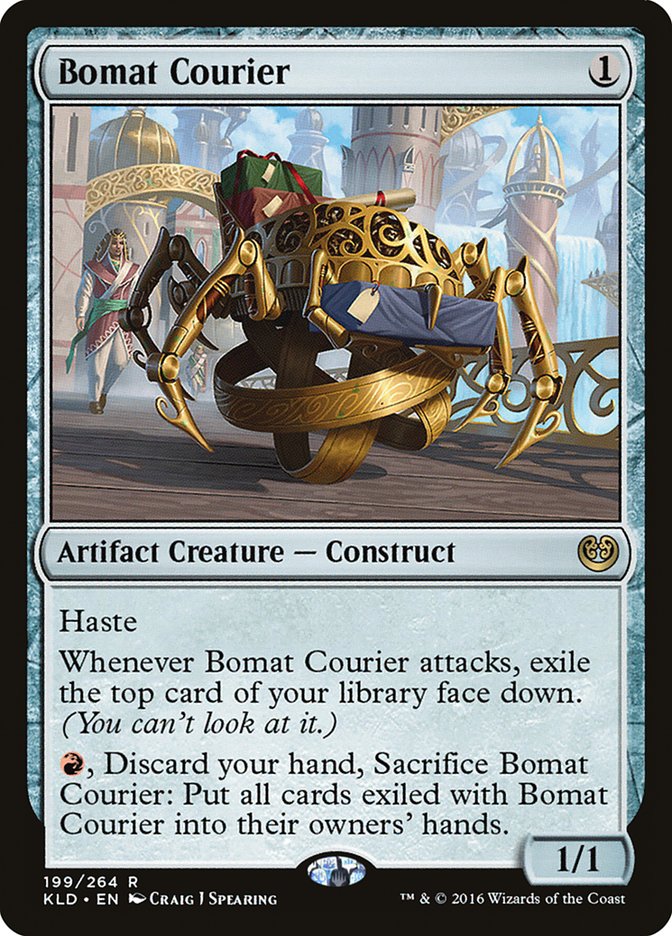
Whack and Blast Variants
8-Blast
Shrapnel Blast came to us in 2003 with the release of Mirrodin. For 1R, a player could hurl five damage at their opponent if they sacrificed an artifact. The card went on to see play in the hands of 2004 World Champion Aeo Paquette in an Affinity shell. While not Burn, it cemented the use of this card to deal big damage when combined with an artifact strategy.
Galvanic Blast broke onto the scene in 2010 via Scars of Mirrodin and gave Burn players another avenue to hurl fire at the opponent. With the ability to deal four damage for a single red, if you had three artifacts in play, the Burn pilot got another cheap damage spell.
2021 brought even more tools with the releases of Modern Horizons 2 and Innistrad Crimson Vow. Ragavan, Nimble Pilferer, Dragon’s Rage Channeler, and Voldaren Epicure brought us hasty and powerful one-drops that when paired with Bomat Courier, Mishra’s Bauble, and a smattering of other “draw-a-card” artifacts such as Chromatic Star and Pyrite Spellbomb, enabled the Burn pilot to execute the classic low-curve creature plan backed up by spells which, in the case of DRC, grew those early creatures into even bigger monsters. It seemed now that those early one-drops could pay bigger dividends. As any regular Modern or Legacy player can attest, DRC has become a staple in pretty much ANY red deck with spells.
2022 brought us perhaps the lynchpin in this growing strategy via Kamigawa: Neon Dynasty in the form of Experimental Synthesizer; another draw-a-card artifact that resides low on the curve and enables Galvanic Blast.
Combined with Urza’s Saga, this deck has powerful tools that allow it to compete at the top of the Modern format.
2023 was a good year for bringing this all together in what is widely considered the best version of the 8-Blast variant. MTGO user Dcal215 went undefeated in a Modern Challenge 32 on April 4th, 2023 with this list that included the aforementioned tools and highlights just how powerful the Sligh Burn has become.
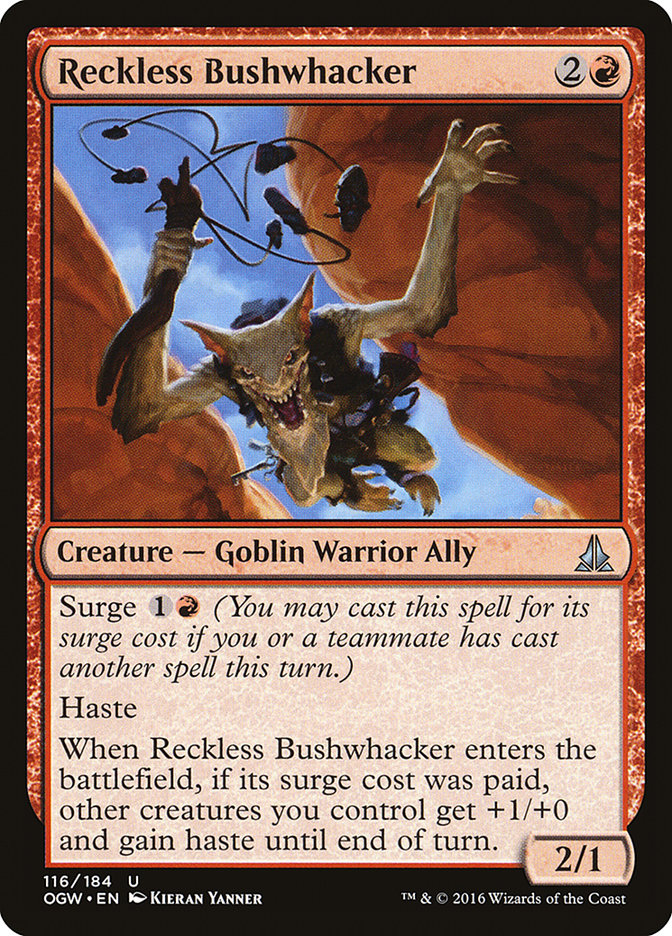
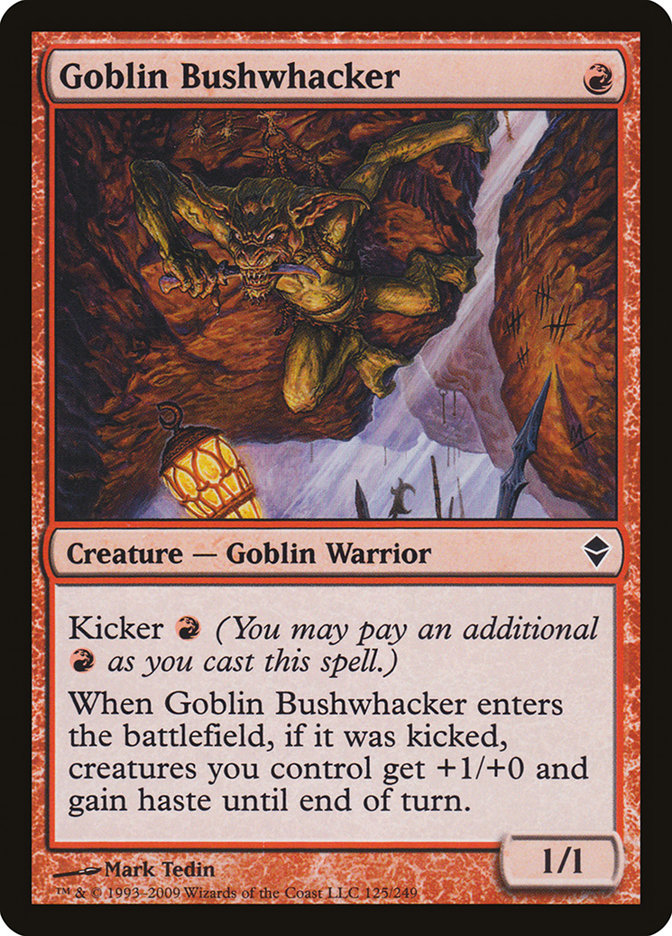
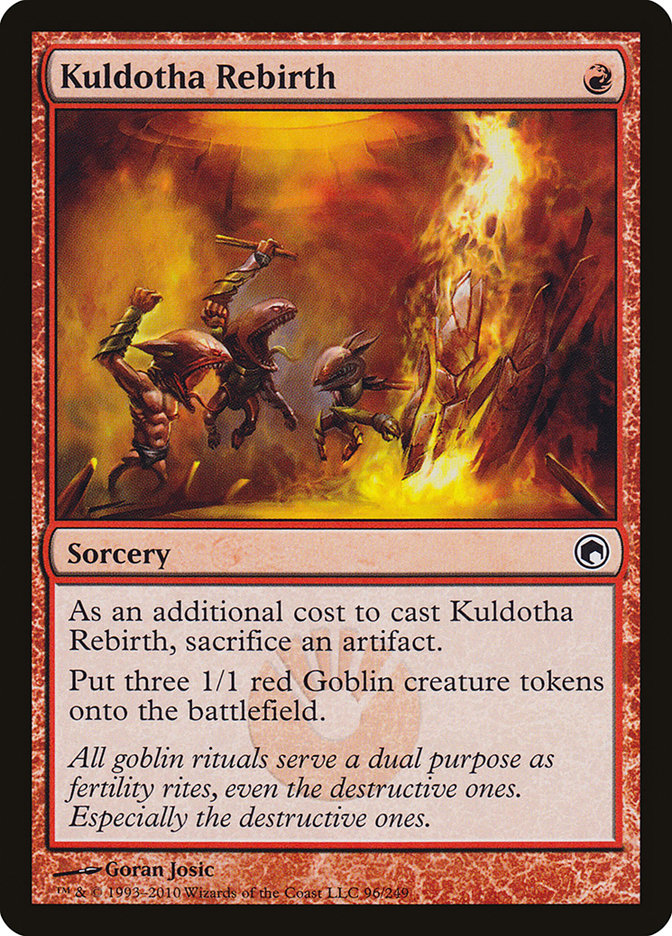
8-Whack
Another variant is the 8-Whack deck which uses the same strategy of littering the battlefield with cheap creatures early and then turning them into a huge army on the second or third turn.
Using cards such as Goblin Bushwhacker and Reckless Bushwhacker, the goal is to drop cheap artifacts onto the battlefield on the first turn, utilize cards like Kuldotha Rebirth and Gleeful Demolition to sacrifice them and turn them into Goblin tokens, and then on the second turn use one of the aforementioned Bushwhackers to swing for a huge amount of damage.
Some variants of this also splash Shrapnel Blast or Galvanic Blast as a backup plan when the creature strategy does not work out.
This year, some mages also sprinkled in Green to take advantage of the littering of small creatures to convoke Ancient Imperiosaur for a huge 20/20 trample creature on the second or third turn.
More recently in Pioneer, a brew dubbed Boros Convoke broke into the top of the format taking advantage of Kuldotha Rebirth and Gleeful Demolition to creature many small creatures early and convoking them into bigger hitters such as Knight-Errant of Eos or Venerated Loxodon.
While these later strategies aren’t necessarily considered Burn in a traditional sense, they highlight the versatility of the various lines of Red Deck Wins.
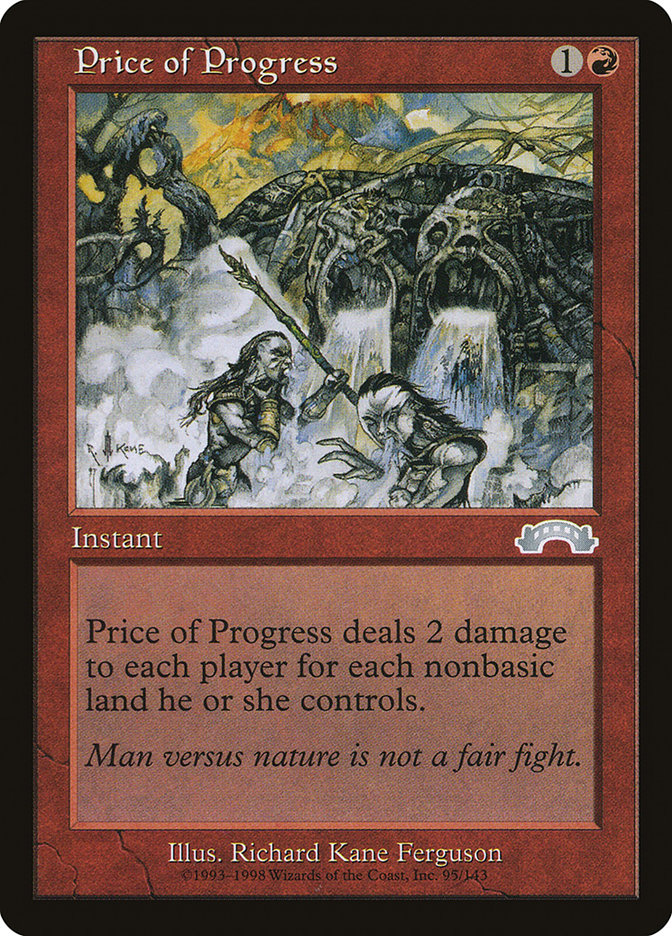
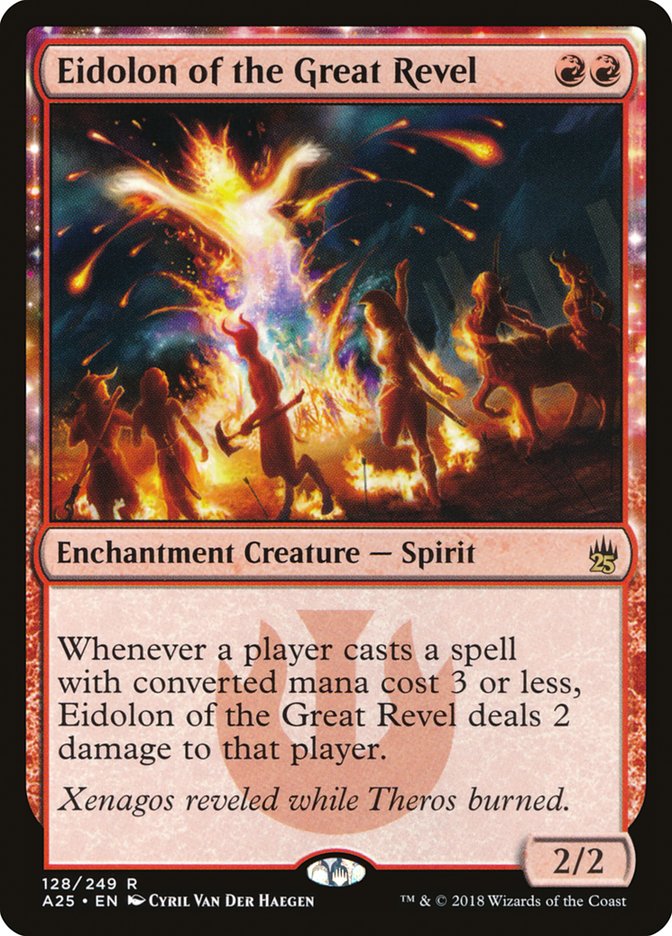
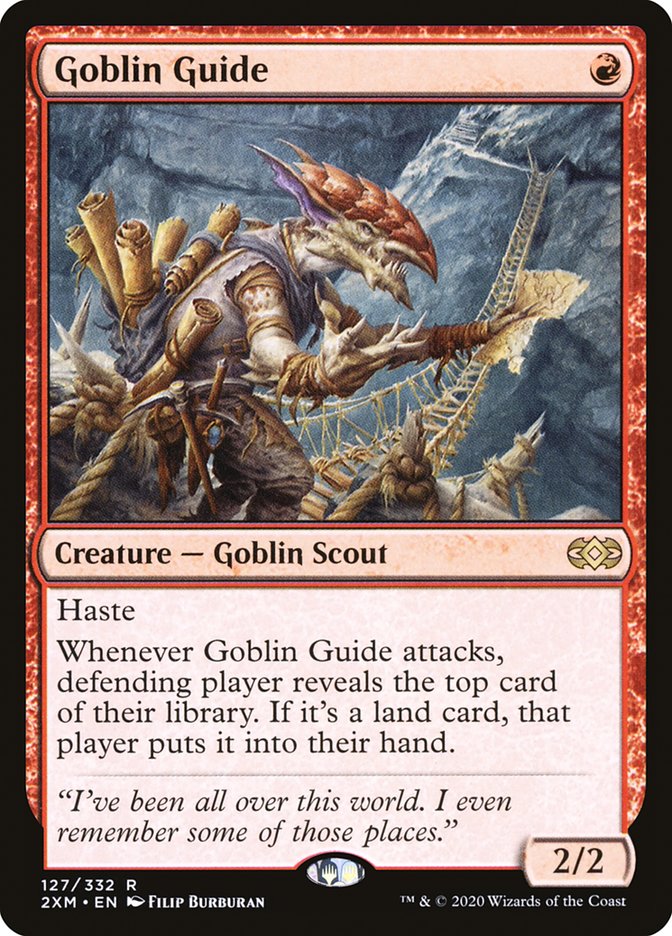
Other Lines of Attack
Burn continues to be played in pretty much all the formats out there except Vintage.
Legacy Burn
In Legacy, where deck design is dominated by expensive Reserved List cards, Burn is a viable budget option albeit not nearly as successful as in other formats. As budget brews go, one can get into a Burn deck in Legacy for around $200.
The plan in most Legacy decks still involves striking early with hasty creatures such as Goblin Guide, and then backing this up with cards like Eidolon of the Great Revel, Price of Progress, and Blood Moon, seeking to take advantage of the prevalence of non-standard lands in the format. The unsuspecting mage who runs up against a well-tuned red deck in Legacy will be overrun quickly.
Oddly, it seems like the brews of Burn in Modern outclass the brews in Legacy. There probably isn’t much room for cutting the powerful tools to include the cards that the Modern variants use.
Boros Burn
A popular option in Modern is to splash white to take advantage of cards such as Boros Charm, Lightning Helix, and Path to Exile making for a more mid-range Burn deck compared to the traditional Sligh style builds. The plan is similar to traditional Burn in trying to get cheap creatures out early and back it up with spells.
However, it has become clear that simply relying on small creatures and expecting to win within four turns is not as reliable as it was in the early days.
Splashing other colors to take advantage of other pieces of the color pie provides some backstop to the traditional ways that Red Deck loses.
Final Thoughts
I could probably drag on about the number of high-profile tournament finishes red decks have had over the years, but I think the narrative above speaks for itself.
Paul Sligh’s influence on the game in the form of Red Deck Wins has persevered for decades now. Mages young and old, new to the game or veteran, still put their faith in Burn decks from time to time.
It is also worth noting that with COVID, high-profile in-person tournaments evaporated and MTGO stepped in to fill the void. While that seems to be changing in 2023 with several large tournaments occurring and the return of large in-person events, it will be interesting to see if Red Deck Wins floats back to the top and regains some of the notoriety it once had.


 Support us on
Support us on 